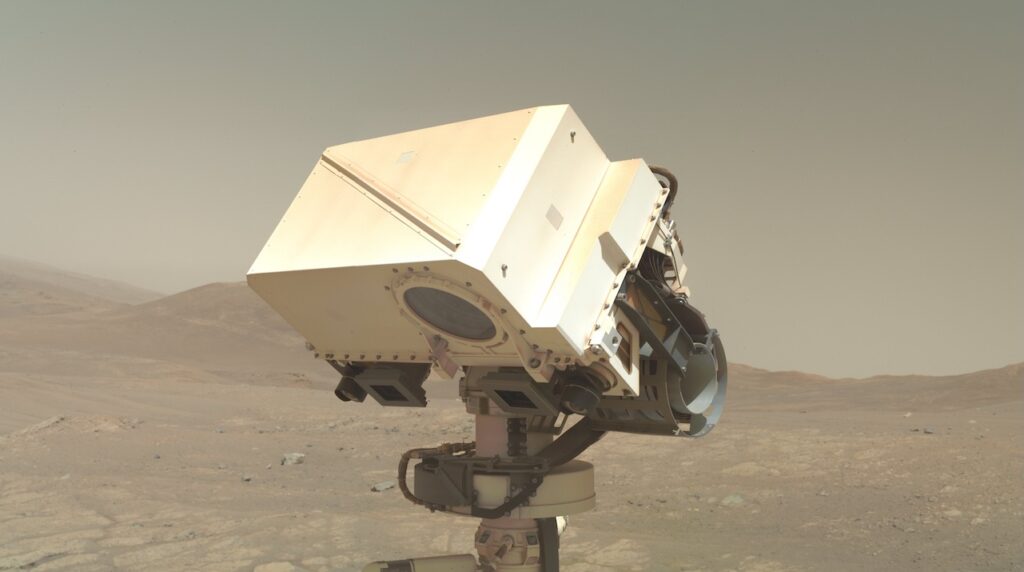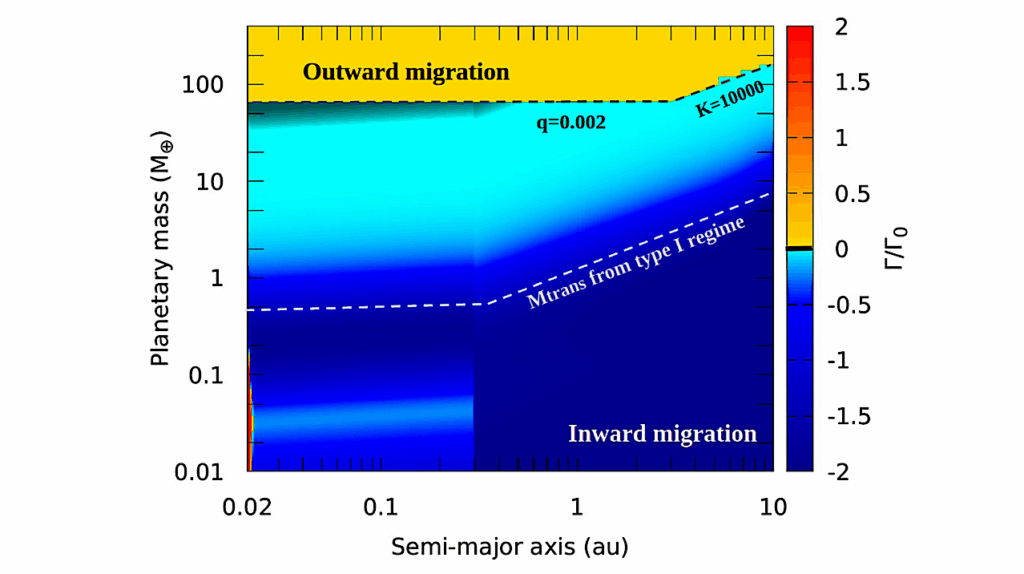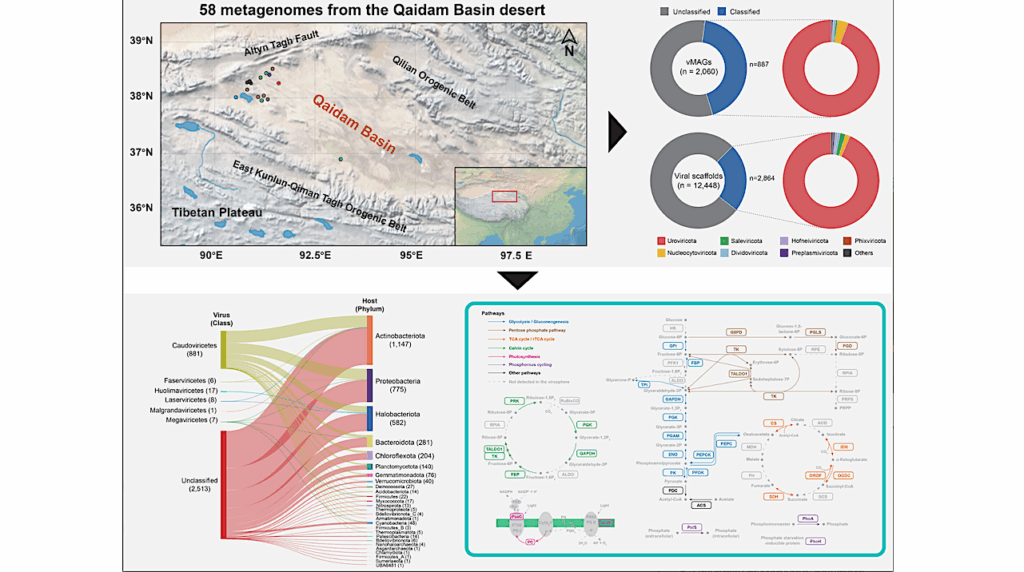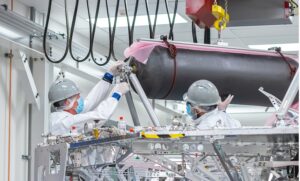Now Reading: Irradiated Atmospheres IV: Effect of Mixing Heat Flux on Chemistry
-
01
Irradiated Atmospheres IV: Effect of Mixing Heat Flux on Chemistry
Irradiated Atmospheres IV: Effect of Mixing Heat Flux on Chemistry
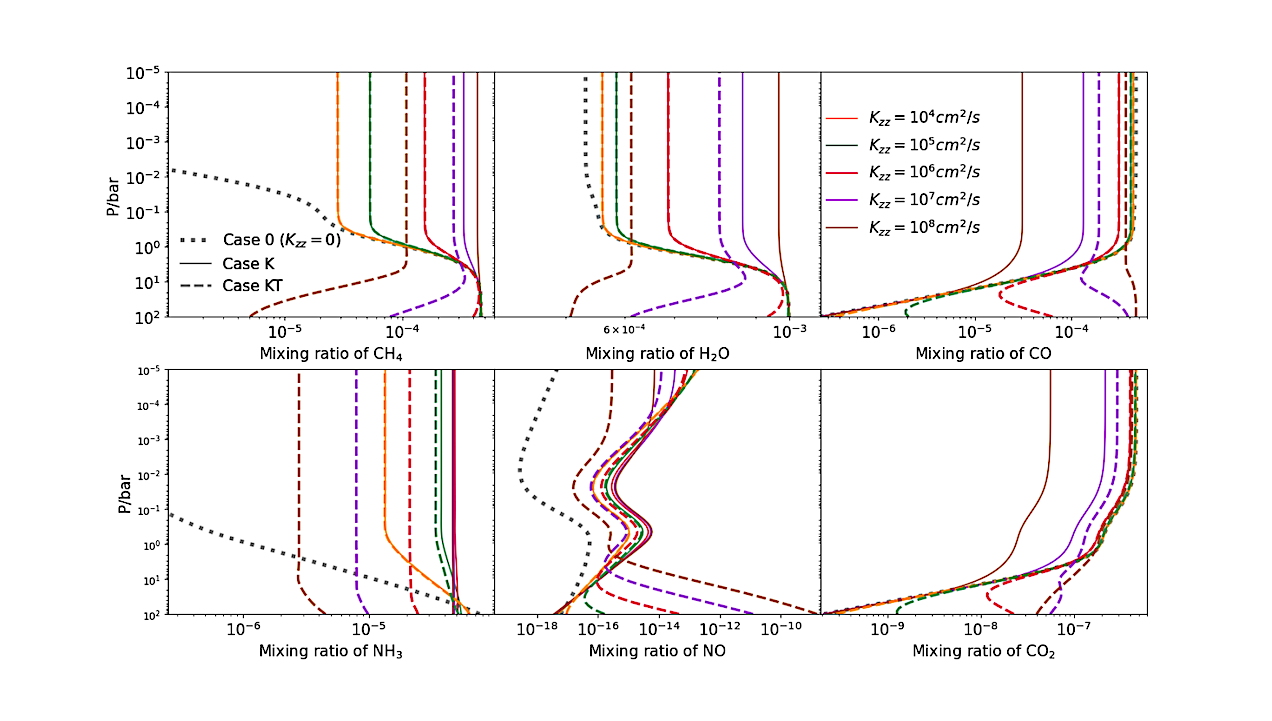

The mixing ratios of CH4, H2O, CO, NH3, NO and CO2 across varying intensities of vertical mixing. The dotted line (Case 0) corresponds to the case where there is no vertical mixing in the atmosphere. The solid lines (Case K) represent the scenarios where only the effect of material transport due to vertical mixing is considered, without accounting for the mixing heat flux. The dashed lines (Case KT) consider both the material mixing and the heat flux brought about by vertical mixing. The different colors correspond to different values of Kzz, with the temperature profile displayed in Figure 1. — astro-ph.EP
Vertical mixing disrupts the thermochemical equilibrium and introduces additional heat flux that alters exoplanetary atmospheric temperatures. We investigate how this mixing-induced heat flux affects atmospheric chemistry.
Temperature increase in the lower atmosphere by the mixing-induced heat flux alters species abundances there and modifies those in the upper atmosphere through vertical transport. In the lower atmosphere, most species follow thermodynamic equilibrium with temperature changes. In the upper layers, species mixing ratios depend on the positions of quenching levels relative to the regions exhibiting significant mixing-induced temperature variations.
When the quenching level resides within such region (e.g. CO, CH4, and H2O with strong mixing), the mixing ratios in the upper atmosphere are modified due to changes in the quenched ratios affected by the temperature variation in the lower atmosphere. This alters the mixing ratio of other species (e.g. NO and CO2) through the chemical reaction network, whose quenching occurs in the region without much temperature change.
The mixing ratios of CH4, H2O, and NH3 decrease in the lower atmosphere with increasing mixing heat flux, similarly reducing these ratios in the upper atmosphere. Conversely, the mixing ratios of CO, CO2, and NO rise in the lower atmosphere, with CO and CO2 also increasing in the upper levels, although NO decreases.
Weaker host star irradiation lowers the overall temperature of the planet, allowing a smaller mixing to have a similar effect. We conclude that understanding the vertical mixing heat flux is essential for accurate atmospheric chemistry modeling and retrieval.
Zhen-Tai Zhang, Wei Zhong, Wei Wang, Jianheng Guo, Xianyu Tan, Bo Ma, Ruyi Wei, Cong Yu
Comments: 11 pages, 3 figures. APJ accepted
Subjects: Earth and Planetary Astrophysics (astro-ph.EP)
Cite as: arXiv:2510.21543 [astro-ph.EP] (or arXiv:2510.21543v1 [astro-ph.EP] for this version)
https://doi.org/10.48550/arXiv.2510.21543
Focus to learn more
Submission history
From: Zhen Tai Zhang
[v1] Fri, 24 Oct 2025 15:04:27 UTC (493 KB)
https://arxiv.org/abs/2510.21543
Astrobiology
Stay Informed With the Latest & Most Important News
Previous Post
Next Post
-
 012024 in Review: Highlights from NASA in Silicon Valley
012024 in Review: Highlights from NASA in Silicon Valley -
 02Panasonic Leica Summilux DG 15mm f/1.7 ASPH review
02Panasonic Leica Summilux DG 15mm f/1.7 ASPH review -
 03From Polymerization-Enabled Folding and Assembly to Chemical Evolution: Key Processes for Emergence of Functional Polymers in the Origin of Life
03From Polymerization-Enabled Folding and Assembly to Chemical Evolution: Key Processes for Emergence of Functional Polymers in the Origin of Life -
 04How New NASA, India Earth Satellite NISAR Will See Earth
04How New NASA, India Earth Satellite NISAR Will See Earth -
 05And Thus Begins A New Year For Life On Earth
05And Thus Begins A New Year For Life On Earth -
 06Astronomy Activation Ambassadors: A New Era
06Astronomy Activation Ambassadors: A New Era -
07SpaceX launch surge helps set new global launch record in 2024












